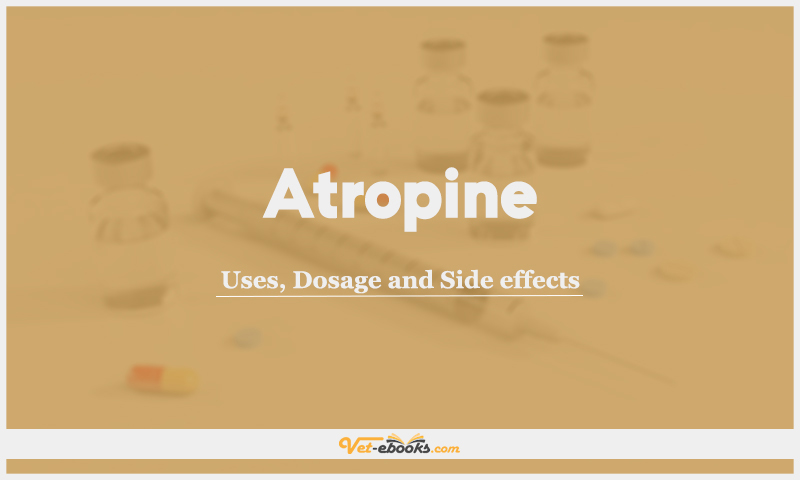Atropine: Uses, Dosage and Side Effects

Overview
Atropine blocks the action of acetylcholine at muscarinic receptors at the terminal ends of the parasympathetic nervous system, reversing parasympathetic effects and producing :
- Mydriasis.
- Tachycardia.
- Bronchodilation.
- General inhibition of GI function.
Uses of Atropine
- Prevent or correct bradycardia and bradyarrhythmias.
- To dilate pupils.
- Management of organophosphate and carbamate toxicities.
- In conjunction with anticholinesterase drugs during antagonism of neuromuscular blockade
Dose of Atropine in Dogs and Cats
Dogs, Cats:
- Ophthalmic:
1 drop in the affected eye q12–24h to cause mydriasis, then once q24–96h to maintain mydriasis.
- Bradyarrhythmias:
0.01–0.03 mg/kg i.v. Low doses may exacerbate bradycardia; repetition of the dose will usually promote an increase in heart rate. 0.03–0.04 mg/kg i.m. can be given to prevent development of bradycardia during administration of potent opioids such as fentanyl.
- Organophosphate poisoning:
Dose 0.2–0.5 mg/kg (¼ dose i.v., ¾ i.m., s.c.) to effect; repeat as necessary; or 0.1–0.2 mg/kg (½ i.v., ½ i.m.) then i.m. q6h.
- Neuromuscular blockade antagonism:
0.04 mg/kg i.v. with edrophonium (0.5–1.0 mg/kg).
Drug Dosage Calculator
You Should Give:
Side Effects of Atropine in Dogs and Cats
- Include sinus tachycardia (usually of short duration after i.v. administration), blurred vision from mydriasis, which may worsen recovery from anesthesia, and drying of bronchial secretions.
- Atropine increases intraocular pressure and reduces tear production.
- Ventricular arrhythmias may be treated with lidocaine if severe.
- Other GI side effects such as ileus and vomiting are rare in small animals.
Contraindications of Atropine in Dogs and Cats
Glaucoma, lens luxation, keratoconjunctivitis sicca.
Some Notes:
- Routine administration prior to anaesthesia as part of premedication is no longer recommended; it is better to monitor heart rate and give atropine to manage a low heart rate if necessary.
- Atropine has a slow onset of action (10 min i.m., 2–3 min i.v.); therefore, it is important to wait for an adequate period of time for the desired effect before redosing.
- The ophthalmic solution tastes very bitter and can cause hypersalivation in cats (and in some dogs).
- Atropine is compatible (for at least 15 min) mixed with various medications but not with bromides, iodides, sodium bicarbonate, other alkalis or noradrenaline.
- The following may enhance the activity of atropine: antihistamines, pethidine, benzodiazepines, phenothiazines, thiazide diuretics, and sympathomimetics.
- Combining atropine and alpha-2 agonists is not recommended.
- Atropine may aggravate some signs seen with amitraz toxicity, leading to hypertension and gut stasis.
Do You Want To Increase Your Veterinary Knowledge and Practical Skills?
You Can Now Browse and Download +3000 Books For Veterinary Professionals & Students Online.
Download Veterinary Books




















